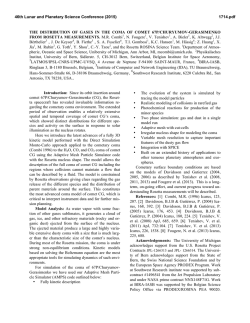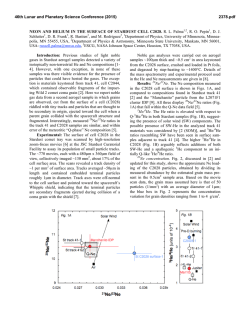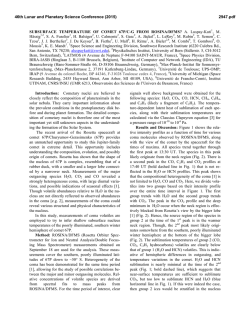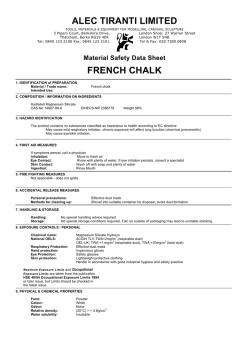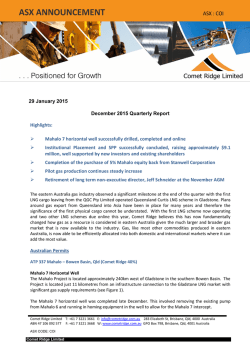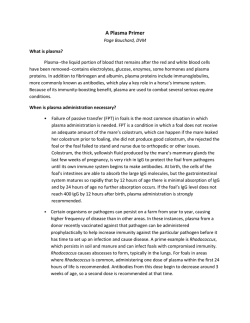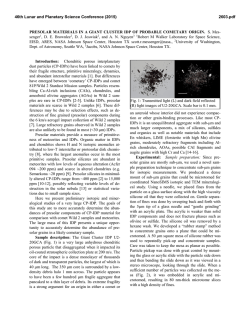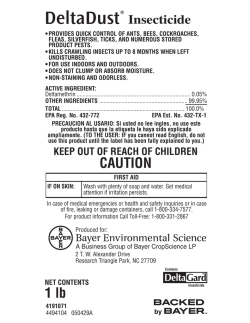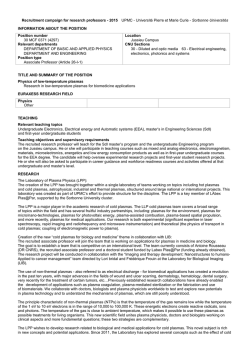
INVESTIGATING DUSTY PLASMA OF COMETARY COMA WITH
46th Lunar and Planetary Science Conference (2015) 2326.pdf INVESTIGATING DUSTY PLASMA OF COMETARY COMA WITH NASA STARDUST DATA. S.J. Pestana1,2, S. Hoban2, 1Department of Geological Sciences, California State Polytechnic University Pomona, 3801 West Temple Avenue, Pomona, CA 91768 ([email protected]), 2Center for Space Science and Technology, University of Maryland Baltimore County, 1000 Hilltop Circle Baltimore MD 21250 Introduction: Harbingers of doom or prophesy for the ancient peoples of Earth, comets are now understood to be primordial fragments from our Solar System's birth composed of various ices and dust species. Among the questions surrounding comets and their elusive character are the properties and processes of the rarefied gasses and disperse dust that surround their solid nucleus. Dusty, or complex, plasmas have been studied in laboratory environments and are thought to exist naturally in several types of space environments. The coma surrounding comet nuclei have been identified as a possible home for dusty plasmas [1]. Within a complex plasma, dust particles that become charged can begin to interact with each other, and the system as a whole can exhibit properties such as self-organization and wave propagation similar to that seen in a liquid or an atomic crystalline lattice. These structures have been called “plasma crystals” or “coulomb lattices” [2]. Hypothesis: Coulomb lattice structures within complex plasmas can exist in the coma surrounding comets. The conditions that allow these structures to form would be intact at 1.9 AU from Sol as was comet Wild 2 when the Stardust spacecraft performed its flyby. At this distance perturbation by solar wind is minimal yet there is enough solar energy for the sublimation, photodissociation and photoionization processes of the comet's ice to produce the dusty plasma environment conducive to coulomb lattice formation. Methods: NASA's Stardust spacecraft performed a flyby of comet 81P/Wild (Wild 2) in 2004 and collected data on the distribution, mass and composition of dust particles surrounding the comet in addition to collecting and returning to Earth physical samples of comet and interstellar dust. Data from the Dust Flux Monitor Instrument (DFMI) and the Cometary and Interstellar Dust Analyzer (CIDA) mass spectrometer will be used to develop a profile of dust properties that surround Wild 2. A generic comet model to approximately match the geometry [3] and orbital position of Wild 2 at Stardust's encounter will be developed to create a baseline for the properties of the comet coma and its plasma component. For this model, the plasma is assumed to be composed of photoionized hydrogen from gaseous water that has sublimated and been photodissociated from the comet's surface. To determine the existence of coulomb lattice structures within this idealized comet model based on Wild 2, coulomb coupling parameters will be calculated for varying cases. Preliminary Results: Development of the comet dusty plasma model is ongoing. Data from Stardust's DFMI, a polarized plastic (PVDF) sensor system that detects impacts of particles within different mass thresholds, is presented below. This chart shows the mass and spacial distribution of collisions that were detected within a 1 kilometer radius sphere around the comet nucleus. Significance: Understanding the space that surrounds comet nuclei will shed light on some of the dynamic processes that define the near-nucleus comet environment. If the complex plasma in the comet coma is found to be a home of plasma crystals, that would provide further opportunities to observe these macroscopic phenomena in a natural setting. The results of this research can later be compared to further in situ exploration by other spacecraft such as ESA's ongoing Rosetta mission. References: [1] Mendis, D.A., and M. Horányi (2013), Dusty Plasma Effects in Comets: Expectations for Rosetta, Reviews of Geophysics, 51, 53–75. [2] Vasut, J., Hyde, T.W., Barge, L., (2002) Finite coulomb crystal formation, Advances in Space Research 34: 2396-2401. [3] Sekanina, Z., et al. (2004), Modeling the Nucleus and Jets of Comet 81P/Wild 2 Based on the Stardust Encounter Data, Science, 304 (5678): 1769-1774.
© Copyright 2025
